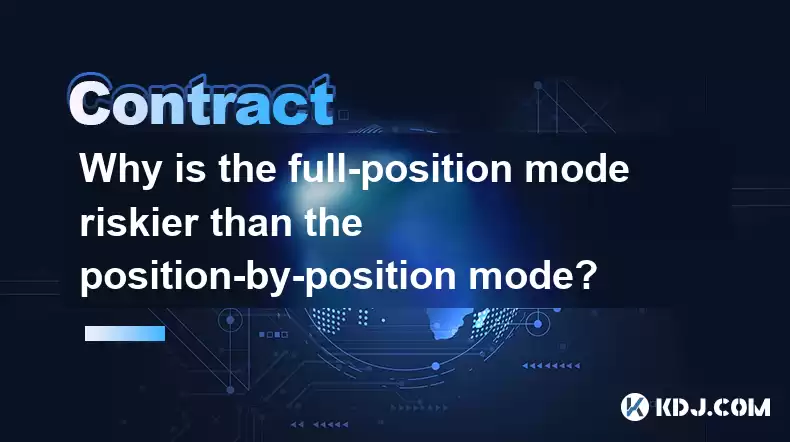-
 Bitcoin
Bitcoin $116700
0.24% -
 Ethereum
Ethereum $3973
4.34% -
 XRP
XRP $3.283
7.68% -
 Tether USDt
Tether USDt $1.000
0.01% -
 BNB
BNB $789.8
2.27% -
 Solana
Solana $176.2
3.31% -
 USDC
USDC $0.9999
0.00% -
 Dogecoin
Dogecoin $0.2238
5.14% -
 TRON
TRON $0.3389
-0.51% -
 Cardano
Cardano $0.7907
4.03% -
 Stellar
Stellar $0.4527
10.02% -
 Hyperliquid
Hyperliquid $41.07
4.27% -
 Sui
Sui $3.794
1.77% -
 Chainlink
Chainlink $19.49
10.40% -
 Bitcoin Cash
Bitcoin Cash $580.9
0.74% -
 Hedera
Hedera $0.2617
4.32% -
 Avalanche
Avalanche $23.41
3.67% -
 Ethena USDe
Ethena USDe $1.001
-0.03% -
 Litecoin
Litecoin $122.4
1.38% -
 Toncoin
Toncoin $3.364
1.49% -
 UNUS SED LEO
UNUS SED LEO $8.988
0.37% -
 Shiba Inu
Shiba Inu $0.00001295
2.82% -
 Uniswap
Uniswap $10.62
5.75% -
 Polkadot
Polkadot $3.922
4.46% -
 Dai
Dai $1.000
0.01% -
 Bitget Token
Bitget Token $4.494
2.15% -
 Monero
Monero $268.0
-1.30% -
 Cronos
Cronos $0.1523
3.68% -
 Pepe
Pepe $0.00001127
4.43% -
 Aave
Aave $285.4
4.85%
Why is the full-position mode riskier than the position-by-position mode?
Full-position mode is riskier due to high market exposure; a single trade can lead to total loss, unlike position-by-position mode which spreads risk across multiple trades.
Apr 13, 2025 at 03:42 pm

Why is the Full-Position Mode Riskier Than the Position-by-Position Mode?
In the world of cryptocurrency trading, the choice between full-position mode and position-by-position mode can significantly impact the risk profile of a trader's portfolio. Understanding the differences between these two modes is crucial for making informed trading decisions. This article delves into why the full-position mode is considered riskier than the position-by-position mode, exploring the mechanics, risks, and potential outcomes associated with each approach.
Understanding Full-Position Mode
Full-position mode involves committing the entire trading capital to a single trade or a set of trades that are managed as a whole. This approach is often used by traders who have a high conviction in their market analysis and are willing to take on substantial risk for potentially higher rewards.
In full-position mode, the entire account balance is exposed to the market's volatility. If the market moves favorably, the trader can achieve significant gains. However, if the market moves against the trader's position, the potential for substantial losses is equally high. This mode is akin to putting all your eggs in one basket, where the outcome of a single trade can dramatically affect the overall portfolio.
Understanding Position-by-Position Mode
Position-by-position mode, on the other hand, involves managing trades individually. Traders allocate a portion of their capital to each trade, spreading the risk across multiple positions. This approach allows for more granular control over the portfolio and can help mitigate the impact of any single trade's failure.
In this mode, traders can diversify their investments across different assets or strategies, reducing the risk of a total loss. If one trade performs poorly, the impact on the overall portfolio is limited to the amount allocated to that specific trade. This method is often favored by traders who prefer a more conservative approach to managing their risk.
Risk Exposure in Full-Position Mode
The primary reason full-position mode is riskier is the high level of exposure to market volatility. When a trader uses their entire capital for a single trade, they are essentially betting everything on one outcome. If the market moves unfavorably, the trader could face a total loss of their capital.
For example, if a trader uses full-position mode to buy Bitcoin, expecting its price to rise, and the price instead drops significantly, the trader could lose their entire investment. This scenario is particularly risky in the cryptocurrency market, known for its high volatility and unpredictable price movements.
Risk Mitigation in Position-by-Position Mode
Position-by-position mode offers a more controlled approach to risk management. By allocating only a portion of the capital to each trade, traders can limit their exposure to any single market movement. This method allows for diversification, which is a fundamental principle of risk management.
For instance, a trader might allocate 20% of their capital to Bitcoin, 20% to Ethereum, and the remaining 60% to other cryptocurrencies or stablecoins. If Bitcoin's price drops, the trader's loss is limited to the 20% allocated to that asset, rather than the entire portfolio.
Impact of Market Volatility
Market volatility plays a significant role in the risk associated with full-position mode. Cryptocurrency markets are notorious for their rapid price swings, which can be exacerbated by factors such as regulatory news, technological developments, and market sentiment.
In full-position mode, these rapid price movements can lead to significant gains or losses in a short period. A trader who is fully invested in a single asset is at the mercy of these market dynamics, with little room to maneuver if the market turns against them.
In contrast, position-by-position mode allows traders to adjust their positions more flexibly in response to market volatility. If one asset starts to decline, the trader can close that position and reallocate the capital to other assets that may be performing better. This flexibility can help mitigate the impact of market volatility on the overall portfolio.
Psychological Factors and Decision-Making
Psychological factors also contribute to the increased risk of full-position mode. When a trader commits their entire capital to a single trade, the pressure to make the right decision can be immense. This pressure can lead to emotional decision-making, such as holding onto a losing position in the hope that it will recover, or panic selling at the first sign of a downturn.
In position-by-position mode, the psychological burden is distributed across multiple trades. If one trade goes south, the trader can focus on managing the other positions without the pressure of a total loss looming over them. This approach can lead to more rational decision-making and better overall trading performance.
Liquidity and Market Impact
Liquidity is another factor to consider when comparing full-position mode and position-by-position mode. In full-position mode, a trader may need to enter or exit a large position, which can impact the market, especially in less liquid cryptocurrency markets.
For example, if a trader using full-position mode decides to sell a large amount of Bitcoin, the sheer volume of the trade could drive the price down, resulting in a lower sale price than anticipated. This market impact can exacerbate losses and increase the risk associated with full-position mode.
In position-by-position mode, trades are typically smaller and less likely to significantly impact the market. This smaller trade size can help traders enter and exit positions more smoothly, reducing the risk of adverse market impact.
Frequently Asked Questions
Q: Can full-position mode ever be less risky than position-by-position mode?
A: While full-position mode is generally considered riskier due to its high exposure to market volatility, it can be less risky in certain scenarios. For example, if a trader has extremely high confidence in a market prediction and the market moves exactly as anticipated, full-position mode could result in significant gains with minimal risk. However, such scenarios are rare and unpredictable, making full-position mode a high-risk strategy overall.
Q: How can a trader transition from full-position mode to position-by-position mode?
A: Transitioning from full-position mode to position-by-position mode involves several steps:
- Assess Current Position: Evaluate the current full-position trade to understand its performance and potential risks.
- Determine Allocation: Decide on the percentage of capital to allocate to each new position. A common approach is to allocate equal amounts to different assets or strategies.
- Close Full Position: If necessary, close the existing full-position trade to free up capital for new positions.
- Open New Positions: Use the freed-up capital to open multiple smaller positions, ensuring that each position aligns with the predetermined allocation strategy.
- Monitor and Adjust: Continuously monitor the performance of each position and adjust allocations as needed to manage risk effectively.
Q: Are there any tools or platforms that support position-by-position mode more effectively?
A: Yes, several trading platforms and tools are designed to support position-by-position mode more effectively. Platforms like Binance, Coinbase Pro, and Kraken offer features such as portfolio management, risk assessment tools, and the ability to set stop-loss and take-profit orders for individual positions. Additionally, trading bots and algorithmic trading platforms can automate the process of managing multiple positions, helping traders maintain a diversified portfolio with less manual effort.
Q: How does the choice between full-position and position-by-position mode affect tax implications?
A: The choice between full-position and position-by-position mode can have different tax implications depending on the jurisdiction and the specific tax laws governing cryptocurrency trading. In general, position-by-position mode may result in more frequent trading and potentially more taxable events, as each trade is managed individually. Conversely, full-position mode might lead to fewer taxable events but could result in larger gains or losses, which could impact the overall tax liability. It's essential for traders to consult with a tax professional to understand the specific implications based on their trading strategy and location.
Disclaimer:info@kdj.com
The information provided is not trading advice. kdj.com does not assume any responsibility for any investments made based on the information provided in this article. Cryptocurrencies are highly volatile and it is highly recommended that you invest with caution after thorough research!
If you believe that the content used on this website infringes your copyright, please contact us immediately (info@kdj.com) and we will delete it promptly.
- Roman Storm, Funding Effort, and the Looming Defense Retrial: A New York Minute on the Tornado Cash Case
- 2025-08-09 02:50:14
- Crypto's Wild Ride: XRP, Dogecoin, and the Altcoin Surge You Can't Ignore
- 2025-08-09 02:50:14
- Elon Musk, Bitcoin, and the Enduring Power of Approval: A Crypto Love Story?
- 2025-08-09 03:50:15
- Ruvi AI: The Next Big Thing After Ripple on CoinMarketCap?
- 2025-08-09 03:50:15
- Floki Price Surges: Elliott Wave and Fibonacci Setups Point to Potential Gains!
- 2025-08-09 02:30:16
- Pepe Price, RTX (Remittix?) & the $10K ETH Dream: NYC Crypto Chatter
- 2025-08-09 02:30:16
Related knowledge

What is the difference between realized and unrealized PNL on KuCoin?
Aug 09,2025 at 01:49am
Understanding Realized and Unrealized PNL on KuCoinWhen trading on KuCoin, especially in futures and perpetual contracts, understanding the distinctio...

How does KuCoin Futures compare against Binance Futures in terms of features?
Aug 09,2025 at 03:22am
Trading Interface and User ExperienceThe trading interface is a critical component when comparing KuCoin Futures and Binance Futures, as it directly i...

What is the distinction between mark price and last price on KuCoin?
Aug 08,2025 at 01:58pm
Understanding the Basics of Price in Cryptocurrency TradingIn cryptocurrency exchanges like KuCoin, two key price indicators frequently appear on trad...

What are the specific maker and taker fees on KuCoin Futures?
Aug 08,2025 at 08:28am
Understanding Maker and Taker Fees on KuCoin FuturesWhen trading on KuCoin Futures, users encounter two primary types of fees: maker fees and taker fe...

Can you explain the difference between cross margin and isolated margin on KuCoin?
Aug 09,2025 at 02:57am
Understanding Margin Trading on KuCoinMargin trading on KuCoin allows traders to borrow funds to increase their trading position beyond their actual c...

How can I open a long position on KuCoin Futures?
Aug 09,2025 at 02:07am
Understanding KuCoin Futures and Long PositionsOpening a long position on KuCoin Futures means you are speculating that the price of a cryptocurrency ...

What is the difference between realized and unrealized PNL on KuCoin?
Aug 09,2025 at 01:49am
Understanding Realized and Unrealized PNL on KuCoinWhen trading on KuCoin, especially in futures and perpetual contracts, understanding the distinctio...

How does KuCoin Futures compare against Binance Futures in terms of features?
Aug 09,2025 at 03:22am
Trading Interface and User ExperienceThe trading interface is a critical component when comparing KuCoin Futures and Binance Futures, as it directly i...

What is the distinction between mark price and last price on KuCoin?
Aug 08,2025 at 01:58pm
Understanding the Basics of Price in Cryptocurrency TradingIn cryptocurrency exchanges like KuCoin, two key price indicators frequently appear on trad...

What are the specific maker and taker fees on KuCoin Futures?
Aug 08,2025 at 08:28am
Understanding Maker and Taker Fees on KuCoin FuturesWhen trading on KuCoin Futures, users encounter two primary types of fees: maker fees and taker fe...

Can you explain the difference between cross margin and isolated margin on KuCoin?
Aug 09,2025 at 02:57am
Understanding Margin Trading on KuCoinMargin trading on KuCoin allows traders to borrow funds to increase their trading position beyond their actual c...

How can I open a long position on KuCoin Futures?
Aug 09,2025 at 02:07am
Understanding KuCoin Futures and Long PositionsOpening a long position on KuCoin Futures means you are speculating that the price of a cryptocurrency ...
See all articles

























































































